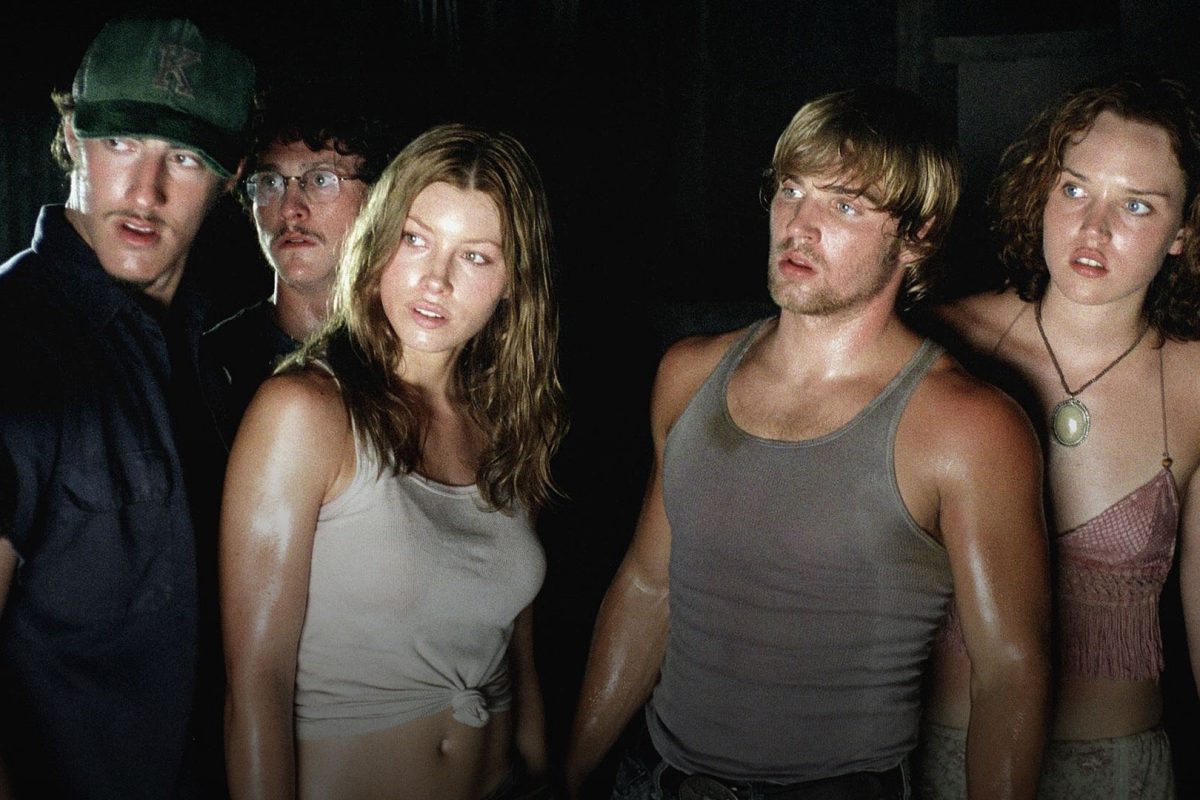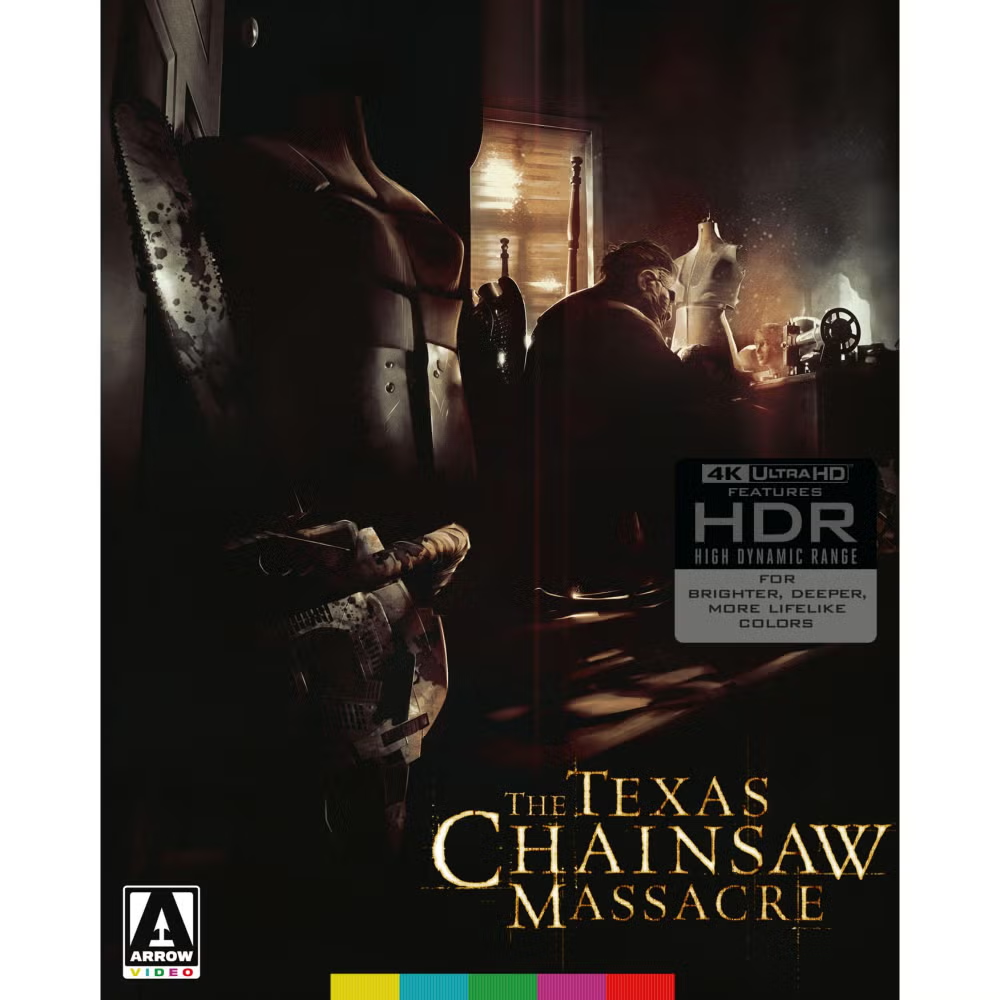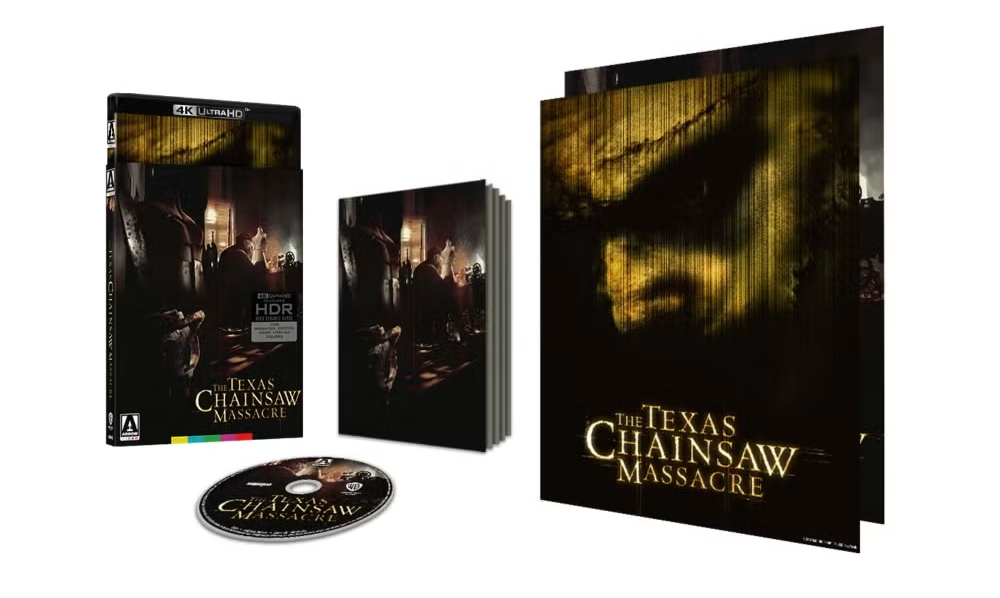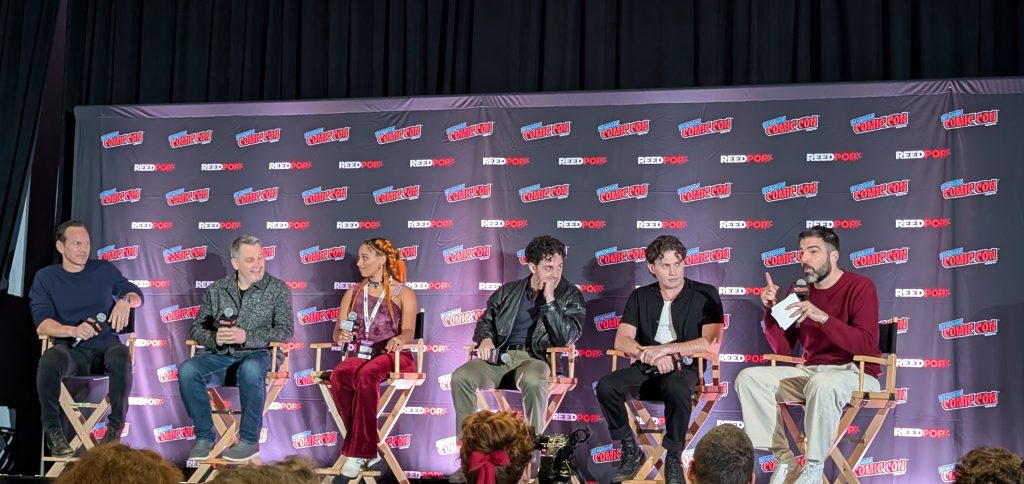Misc
[INTERVIEW] You Can’t Get Rid of ‘The Babadook:’ Jennifer Kent Discusses Her Feature Debut at 10

It’s hard to think of a horror icon from the 2010s that is as instantly recognizable as the eponymous entity in The Babadook, the directorial debut of Aussie filmmaker Jennifer Kent. With his long black coat, top hat, and grinning white face — all styled after Lon Chaney in the lost film London After Midnight — not to mention his memorable name, Mister Babadook is certainly distinctive.
It’s his post-release activities, however, that truly cemented him in the cultural consciousness. After bursting onto the scene at the 2014 Sundance Film Festival, Mister Babadook quickly pivoted from nightmare to meme to LGBTQ+ antihero and then on to Scream(2022) reference, a career trajectory that most horror villains can only dream of.
Yet despite the good fun we’ve had with its big bad over the years, The Babadook still has the power to hold and haunt us. Sitting in a theater in New York City in 2024 watching Amelia (Essie Davis) wrestling with insidious thoughts of murdering her young son, Samuel (Noah Wiseman), I found myself suddenly shifting in my seat, gripped with the same unease that chilled me when I first watched the film in Edinburgh a decade prior. There’s a reason that The Babadook made its way into a Scream film. The shadow it cast is long, and we’re still under it.
Kent herself seems quietly pleased about the lasting mark her film has made. To celebrate the 10th anniversary of The Babadook, I sat down with her at Fantastic Fest 2024 for a conversation about influence, Australianness, and getting audiences to care.
The following interview has been lightly edited for clarity and conciseness.
An Interview with The Babadook Director Jennifer Kent
Samantha McLaren: First off, I wanted to say a personal thank you for giving us a goth gay icon. I was Mister Babadook for Pride in 2017.
Jennifer Kent: Oh, I just love all that! It’s hilarious. I don’t think it’s ever going to go away.
SM: No, he’s in the pantheon of gay icons now; we’ve embraced him as our own.
But on a more serious note, The Babadook has become a kind of cultural milestone. People point to it as being at the start of this new era of horror, an era of — and I hate the term — “elevated” horror. But I’m curious what you view as the film’s greatest legacy.
JK: Wow. I don’t know if I can even answer that! I feel so inside it. I think a legacy is something that other people would perhaps be able to tell me.
I feel it’s influence, as in I feel the love for it. When you make a film and it first comes out, it’s all just such a rush and a blur. But now I can see as the film progresses, I feel really proud that it sits within a canon of films that I absolutely adore. I mean, there was a time when I wanted to make films, I hadn’t made a film, and it wasn’t that long ago. And I feel very proud of it, that it’s been embraced the way it has.
SM: One way you know your horror film has made it is when it’s referenced in a Scream movie. How did you first feel when you heard that?
JK: I mean, Scream I watched as a kid, so to have the film reference my film… it’s surreal. As well as The Simpsons and You’re the Worst and other things that have come up. It always tickles me. It’s a lovely moment.

SM: Australian horror as a whole has a reputation for being very intense, very scary, and often very violent. How do you see your film within the landscape of Aussie horror?
JK: Someone brought up the other day that a lot of Aussie horror is about our environment, because we obviously have cities like everywhere else, and quite populated cities, but we also have what they sometimes call the “dead heart,” which is just this huge expanse of desert. And the nature — you know, there’s the running joke that Australia will kill you, and I think a lot of horror from Australia has utilized that so beautifully.
But I think The Babadook is more interior. It’s what’s inside that will kill you, what’s in the house will kill you. Apart from, like, Lake Mungo, which is also a film that’s interior horror, it’s very different to many Australian horrors, like, say, Wolf Creek.
SM: Drastically different sides of the spectrum.
JK: But still somehow with something similar running through them. The Australianness is there.
SM: It’s a very interior film and a highly emotional film. How did you work with the actors to create a space of psychological safety for them to give such intense performances?
JK: I’m just inherently aware of it as an actor. I had five years of actor training, but I’ve acted since I was a child, unprofessionally and then professionally when I went to drama school. And just as a human, I’m a very sensitive person; I will often feel other people’s feelings for them if they’re not feeling them. So I could no more ignore an actor’s feelings or needs in a scene than fly to the moon, because it’s just so important to me. I work out what kind of actor they are and what they need as an actor — whether they want to talk a lot, not talk a lot; whether they’re a feelings person or more analytical — and then I’ll just keep them safe through lots of preparation.
With Noah, that five-year-old boy who turned six during our shoot — he’s a baby, and this is a scary story, so I needed to educate him and inform him about the story as much as I could, [give him] the child version. And then it’s just about protection and empowerment. And the same with Essie, really. Obviously, she’s not as scared, but it’s still about empowerment and protection.
SM: That really comes through.
JK: I hope so.
SM: You’ve spoken a lot in the past about the reaction toward your mother character who is perhaps not delighted about the joys of motherhood. But then you also have Samuel, this child who is intentionally overwhelming, even annoying, but still sympathetic. Was there any backlash to presenting a child like that?
JK: There was a lot of hatred for that character, which disturbed me, to be honest. I think if you look at the arc of the story, yes he’s annoying and deliberately so, because he’s being harassed and terrified by an entity and he’s the only one that can see it, which brings an enormous amount of frustration and rage in him, and fear.
But once he’s drugged, I fear for him. I don’t hate him, I fear for him, because he was telling the truth all along. So the people who really hate Sam as a character all the way through… I don’t know if I want to go around to their house and have dinner with them. [Laughs.]
The film really requires empathy for that little boy. I feel for him.
SM: You need empathy on both sides. You really feel for Amelia going through all this, but Sam is not to blame.
JK: No, and I think as a writer, I always endeavor to tell a story that has compassion for all the characters, even the ones who are almost irredeemable. I did the Cabinet of Curiosities with Guillermo del Toro recently, and the greatest compliment someone gave me on that was when the couple [in Kent’s episode, “The Murmuring”] were having this argument, this person felt he could understand both sides. It wasn’t like “she’s a bitch” or “he’s a bastard.” It was, “I feel for them both, they’re both lost in this argument.”

SM: I wanted to touch on The Babadook’s aesthetic. I know you were influenced by silent films. Are there any other time periods in horror that influence you or that you’d love to pull from for a future film?
JK: For The Babadook, I was really influenced by the Polanski trilogy of horror films in their design, how spare they are, and how meticulously placed they are. I was also impressed with beautiful films like The Innocents, the Jack Clayton film — I’m always impressed by early horror.
I’m looking to make a fantasy horror coming up next, and what I’ll go to in that is paintings. There’s always an influence waiting to be discovered, and that’s the exciting part of it.
SM: I have one last question for you. We talked a little about The Babadook being part of a new wave of horror. In the 10 years since it came out, are there any trends or movements in horror that you find particularly exciting or inspiring?
JK: I think that what’s exciting about this last decade is that films that have depth and complexity and heart to them are actually being financed. And not just being financed — they’re having money thrown at them for P&A [Prints and Advertising].
When The Babadook came out, it wasn’t in this climate where you could put it on in 500 screens. And now it is on 500 screens 10 years later, when originally, it was on two. I think that reflects the confidence that the powers that be — cinemas and financiers and people with money — have in films in the realm of The Babadook that are maybe a bit more complex and frightening.
Thank you to Jennifer Kent for speaking with us.
If it’s in a word or it’s in a look, you should go rewatch The Babadook.
Misc
Our Halloween Giveaway Is Here!

Enter Our Halloween Giveaway!

How to Enter:
Step 1. Make sure to FOLLOW US ON FACEBOOK AND JOIN OUR FACEBOOK GROUP!
Step 2. LIKE AND SHARE the giveaway post!
Step 3. This is the most important step, email us at contact@horrorpress.com with your FULL Facebook name (so we can verify you’re in the group) and who your favorite character is from the Texas Chainsaw franchise.
**Giveaway entries are limited to addresses in the United States.**
**All entries must be 18 or older to enter**

What You’ll Win
The Texas Chainsaw Massacre (2003) Limited Edition 4K UHD from Arrow Video
- 4K (2160p) Ultra HD Blu-ray presentation in Dolby Vision (HDR10 compatible)
- Original DTS-HD MA 7.1 and 5.1 surround audio and lossless stereo audio
- Optional English subtitles for the deaf and hard of hearing
- Brand new audio commentary with Dread Central co-founder Steve “Uncle Creepy” Barton and co-host of The Spooky Picture Show podcast Chris MacGibbon
- Archival audio commentary with director Marcus Nispel, producer Michael Bay, executive producers Brad Fuller and Andrew Form and New Line Cinema founder Robert Shaye
- Archival audio commentary with Marcus Nispel, director of photography Daniel Pearl, production designer Greg Blair, art director Scott Gallager, sound supervisor Trevor Jolly and composer Steve Jablonsky
- Archival audio commentary with Marcus Nispel, Michael Bay, writer Scott Kosar, Brad Fuller, Andrew Form and actors Jessica Biel, Erica Leerhsen, Eric Balfour Jonathan Tucker, Mike Vogel and Andrew Bryniarski
- Reimagining a Classic, a brand new interview with director Marcus Nispel
- Shadows of Yesteryear, a brand new interview with cinematographer Daniel Pearl
- The Lost Leatherface, a brand new interview with actor Brett Wagner
- Masks and Massacres, a brand new interview with makeup effects artist Scott Stoddard
- Chainsaw Symphony, a brand new interview with composer Steve Jablonsky
- Chainsaw Redux: Making A Massacre, a making-of documentary
- Ed Gein: The Ghoul of Plainfield, an in-depth look at the infamous killer who inspired the character of Leatherface
- Severed Parts, a look at the cutting room floor and some of the scenes excised from the final edit
- Deleted scenes including an alternate opening and ending
- Screen tests for Jessica Biel, Eric Balfour and Erica Leerhsen
- Behind-the-scenes featurette
- Cast and crew interviews
- Theatrical trailers and TV spots
- Concept art galleries
- Reversible sleeve featuring original and newly commissioned artwork by Aaron Lea
- Double-sided foldout poster featuring original and newly commissioned artwork by Aaron Lea
- Illustrated collector’s booklet featuring new writing on the film by Michael Gingold
Misc
NYCC 2025 Horror Highlights: A Sneak Peek at ‘The Lost Boys’ Musical, ‘Resident Evil: Requiem,’ and More!

As soon as New York Comic Con announced that its 2025 theme would be “haunted,” I started lacing up my comfy shoes and making a beeline for the Javitz Center! Horror has always been represented at the con, but it felt fitting that it should play a central role in this year’s event at a time when the genre seems more popular than ever.
From beloved family-friendly properties like The Nightmare Before Christmas to pants-dampening titles like the upcoming Resident Evil: Requiem, horror appeared in countless shapes and forms. Here are all the best and scariest insights I gleaned from the show floor, panel rooms, and pop-ups of New York Comic Con 2025!
Our NYCC 2025 Horror Highlights
Resident Evil: Requiem Is Going to Test Your Bladder Strength
Full disclaimer: I’m not a gamer. I’m honestly pretty bad at games, which made my Resident Evil: Requiem play session all the more frightening because I was convinced that everyone around me would realize I’m a fraud. But with easy-to-grasp controls, even for a newb like me, the latest installment in the iconic horror franchise quickly sucked me in and left me on edge for entirely different reasons.
During my 30-minute session, I was introduced to FBI analyst Grace Ashcroft, Requiem’s central character. She swims to consciousness to find herself strapped upside down on a gurney with a needle in her arm, siphoning her blood. After Grace managed to free herself, the controls were handed over to me to explore the creepy facility through Grace’s eyes, looking for a fuse. Some spaces were bathed in red light; others were lit only by flickering bulbs that left me white-knuckling the controller, waiting for something to emerge from the shadows and swallow me whole, not helped by Grace’s anxious, stuttering breathing in my ear.
I took a moment to appreciate how detailed video games have become since my childhood experiences playing Evil Dead: Hail to the King on the original PlayStation (seriously, you can see the dust drifting in beams of light now?!), only for the sound of movement somewhere in the facility to yank me back to the present. I renewed my frantic search for the fuse, only to run blindly into a pitch-black room and encounter something enormous that dragged me into the darkness. Sorry, Grace!
You can find out what happens next when Resident Evil: Requiem releases for the PlayStation 5, Xbox Series X|S, PC, and Nintendo Switch 2 on February 27, 2026.
Megan Fox Is Among the New Cast Members in Five Nights at Freddy’s 2—And Blumhouse Hasn’t Given Up on Its Other m3gan Yet
Blumhouse made several announcements at their NYCC panel, most notably that Megan Fox (Jennifer’s Body) is voicing Toy Chica in director Emma Tammi’s highly anticipated sequel Five Nights at Freddy’s 2, coming to theaters on December 5. Other new additions to the cast include YouTuber Matthew Patrick, aka MatPat, who cameoed in the first movie and will voice Toy Bonnie, and Kellen Goff, who has voiced multiple characters in the game series and will now lend his pipes to Toy Freddy.
I’m interested in Five Nights at Freddy’s 2, not least because my best friend is terrified of the franchise and makes a wildly entertaining moviegoing companion—but I’m more interested in the future of another Blumhouse franchise, M3GAN. After the sequel underperformed, likely due in part to its hard genre pivot away from horror and into action territory, the future of the killer doll is uncertain. But in a special industry presentation on “The Business of Fear,” Jason Blum revealed that “we’re all working to keep M3GAN alive,” adding that Blumhouse is exploring other potential mediums before trying to resurrect her on film.
Does that mean a M3GAN video game might come our way in the future, or perhaps a TV series? I don’t know, but I have a feeling this isn’t the last we’ve seen of the silicone diva.

Photo taken by Samantha McLaren.
The Lost Boys: A New Musical Will Feature Flying Stunts and a Live Vampire Band
My queer heart is a sucker for musical adaptations of horror films I love, so you can be certain that I’ll be heading down to the Santa Carla Boulevard—aka Broadway’s Palace Theater—for The Lost Boys: A New Musical, which begins previews on March 27, 2026. At their NYCC panel, producer Patrick Wilson (The Conjuring franchise), director Michael Arden (Maybe Happy Ending), and cast members LJ Benet, Ali Louis Bourzgui, and Maria Wirries revealed why they feel Joel Schumacher’s 1987 classic translates so well to the stage, and what audiences can look forward to.
“There’s something that I see with both horror movies, musicals, and superhero movies—there’s an element of melodrama that’s really rewarding,” says Wilson, who began his career in musical theater and worked with Schumacher on the director’s 2004 film adaptation of The Phantom of the Opera. “Some people view it as camp, but there’s a reality of it being heightened that felt like this story cemented itself so much to being a musical.”
“They’re a biker gang, after all, and there’s a level of theatricality to that in and of itself,” says Arden. “Our biker gang also happens to play instruments.”
That’s right: the vampires will be playing instruments live on stage, which made casting twice as hard. Ali Louis Bourzgui, who plays David, the character portrayed by Kiefer Sutherland in the film, reveals that he plays guitar. And that wasn’t the only unusual request in the casting call: auditions included a flying test. (Presumably wires were involved, unless Arden has found himself a real cabal of vampires in his cast.)
Other highlights that fans can look forward to include killer music from one of Arden’s favorite bands, The Rescues. You can listen to the song “Have to Have You” right now, featuring instrumentals from Slash. The director also teases that many fan-favorite moments from the film will feature in some way in the musical, including the bridge scene and, yes, even the sexy saxophone guy.
Greg Nicotero’s Guts & Glory Marks a New Challenge for a Legend of the Business
If you like looking at gnarly practical effects in horror movies, chances are you’re familiar with Greg Nicotero’s work, whether you realize it or not. The legendary SFX artist has worked on everything from George Romero’s Day of the Dead and Sam Raimi’s Evil Dead II to Kill Bill and, more recently, The Walking Dead. The impressive extent of his resume was made clear at the panel “Shudder is Here to Scare the S*** Out of You,” in which almost any film mentioned by the other panelists was met by a small smile and a humble murmur of “worked on that” into the mic, often followed by a wild anecdote. Nicotero seems like the most interesting man in the world to grab a drink with, and his new horror competition show for Shudder—Guts & Glory—will let us see more of the man behind the makeup brush.
“Guts & Glory is one of the most fun times I’ve had on a show,” Nicotero says, teasing that the series is “part Sam Raimi, part Halloween Horror Nights, and part Survivor.”
In the six-episode first season, contestants are dropped into an Alabama swamp, where there’s an urban legend about an evil spirit. “One of the contestants gets possessed by the evil spirit, people start dying off, but in the meantime, they’re still competing and there’s a prize,” Nicotero explains.
Guts & Glory is effects-heavy, which was challenging to do in an unscripted series relying on real people’s real-time reactions. “You do a movie, you can cut and try it again,” Nicotero explains. “[This] was completely out of my wheelhouse and out of my comfort zone, but I’m really, really proud of it.”
Nicotero’s Creepshow was one of the first original shows to debut on Shudder, so he’s truly part of the DNA of the horror streamer, which celebrated its 10th anniversary this year. Guts & Glory premieres on October 14 as part of Shudder’s Season of Screams programming.
Horror Short The Littles Deserves the Big-Screen Feature Treatment
Some short films are perfectly suited to their bite-sized format, while others contain the seeds of something much bigger. At the New York Premiere of The Littles, a new short written and directed by American Horror Story producer Andrew Duplessie, I could immediately see the potential for the feature film that Duplessie hopes to make.
Equal parts charming and unsettling, The Littles stars M3GAN’s Violet McGraw as a little girl with a loose floorboard in her bedroom. One night, a scuffling sound and a crack of light between the boards lead the little girl to discover that her family isn’t alone in the house…
Duplessie says The Littles was inspired by his own experiences growing up in a creaky old house with a no-doubt overactive imagination. The short features creepy-cute stop-motion animation from Anthony Scott (The Nightmare Before Christmas), puppets by Katy Strutz (Guillermo del Toro’s Pinocchio), and some truly adorable miniature sets by Aiden Creates, all blended perfectly with the live-action scenes. Check it out if it’s playing at a festival near you, and watch this space for a (fingers-crossed) future feature!

Photo taken by Samantha McLaren.
Disney Publishing’s New The Nightmare Before Christmas Tie-in Novel Welcomes Younger Fans into the Scary Fun
NYCC’s horror happenings weren’t all geared toward an adult audience. Disney Publishing took over Daily Provisions Manhattan West for a pop-up experience inspired by The Nightmare Before Christmas, featuring themed food and drinks like a delectable Pumpkin Potion coffee that I could honestly drink all season long.
At a media and creator event in the space, I took a look at the newly released Hour of the Pumpkin Queen from New York Times best-selling author Megan Shepherd, who also wrote the official novelization of The Nightmare Before Christmas for the film’s 30th anniversary in 2023. In this new tie-in novel, Sally and her rag doll apprentice, Luna, embark on a time-bending adventure to save Jack Skellington and Halloween Town after falling through a mysterious portal.
I was gifted a copy of the book by Disney, but all opinions are my own here. I’m looking forward to giving it a read during the inevitable Halloween hangover that takes place in November, before likely passing it on to my young nieces when they’re old enough. It’s a full novel, not a picture book, so definitely geared more toward a YA audience, but between the beautiful artwork on the cover and the seasonal theme, it might just be the perfect gift for the budding horror lover in your life.
That’s a wrap on New York Comic Con 2025! Be sure to bookmark Horror Press if you haven’t already so you never miss our coverage of conventions, festivals, and more.

























